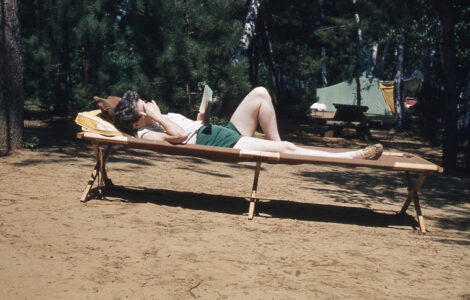Adirondack free-for-all
The other day two men knocked on the sliding glass bedroom door of my friend’s house. Unbeknownst to her, they’d parked a couple of vehicles in her private driveway along Route 73, between Keene and Lake Placid, and were planning to snowshoe up Brown Mountain from her backyard. There’s no trail or trailhead there, just a yard. When she said, “No, please get off my property,” they persisted and asked for directions up the mountain.
Shortly thereafter, I stumbled across a lengthy and entertaining Facebook thread in which a respected Lake Placid woman posted that she had to “politely ask a family not to go skiing in her driveway.” She lives in a residential neighborhood, and her driveway would be impossible to confuse with anything skiable.
We’re witnessing a gold rush moment in Adirondack visits, real estate and vacation rentals. Not to mention the eerie feeling that the hills are alive with the sound of, well, lots of people who aren’t usually here. Surges of people are generally tolerated by locals for many reasons, first of which is the understanding that they bring prosperity for the region. But this area can be wickedly tribal, and many people value their peace and quiet above all else.
There’s always been tension between people who’ve spent most of their lives here, who remember the good old days, and newcomers. Locals mourn formerly quiet back roads and swimming holes, regret not buying that piece of land years ago (now worth hundreds of thousands) and curse the out-of-state plates driving 25 miles under the speed limit to take pictures. But the mania has always been seasonal, and things settle down in the off-season. Quiet lives resume, and the visceral awareness of traffic, people and inconvenience recedes. Twas ever thus.
It’s different now. People are buying property like there’s no tomorrow, and most are sticking around. They’re working remotely and bringing the family with them. Our landscape and communities are changing. Aside from nostalgia over changing times, what does this influx of new residents and visitors mean for the greater Adirondack region?
Population growth stretches resources and challenges perceptions of ownership and stewardship; ultimately a new collective emerges. This area has experienced it time and again: when Indigenous lands were taken, when tuberculosis treatments were the rage, during both Olympic moments, and after 9/11 to name a few. People will likely return to urban centers once the pandemic recedes, but the valve has been opened. New homeowners, residents and visitors will return when something like this happens again. Newly purchased homes and land up here are like insurance policies for future pandemics and other possible disasters.
Until recently, the big economic conversation in our area revolved around how to attract more young families, what amenities were needed to sustain them and how to prevent brain drain. After all, it’s not a real place without schools and kids. Now we need to figure out how to manage the ballooning demand on current, already strained resources.
Our water and sewer systems are outdated. Our grid was once described to me by an energy expert as a patchwork of Hail Marys. Roads and bridges need improvements; our hospitals are small, few and far between; our schools have been consolidating and closing down for decades. Not to mention issues like rural internet access, a lack of good-paying jobs or affordable housing, rural food deserts, public transportation and overuse of public lands.
It’s a big deal, and we need a plan, I’d say a comprehensive one. But it’s not all bad news. New people means new ideas and resources, too. Time, treasure and talent become more available. Tax bases will grow, and cash flow for local businesses will expand, but time, treasure and talent become more available as well. That is how newcomers can help — by getting involved and putting in the effort to integrate into our small communities.
Sure, it’s challenging in a time of mandated social distancing and isolation to forge new connections, but spring and summer follow winter, and there’s no time like the present to research interests and e-intro yourself to a local cause or organization. We have a plethora spending time, energy and real money to address the issues we face, together.
Organizations like the Adirondack Foundation, AdkAction, and ANCA are investing in infrastructure, food systems, environmental concerns and social awareness. The Hub on the Hill is delivering local food to families in need and expanding markets for farmers. The Adirondack Land Trust and Adirondack Council support land management, stewardship and environmental protections. There are a hundred local Rotaries, VFWs, animal shelters, horse rescues, food pantries, schools, radio stations, sports teams, fire departments and other charities that need support.
I encourage new residents to donate, volunteer, join a board and share news of the important work being done here with friends over a quarantini. Buy the local paper and the most recent copy of Adirondack Life. Give to NCPR, or join your local fire department. Help dig your neighbor’s car out. Just don’t cruise through anyone’s backyard without permission; that’s when things can get messy.
—
Katie Wilson lives in Keene.


